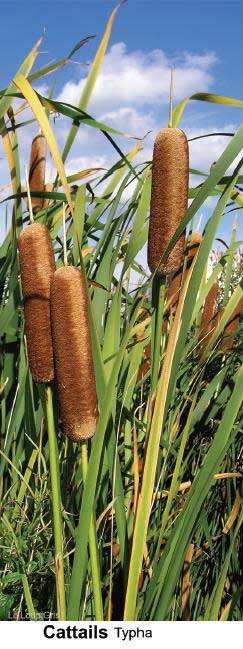cattails
Typha
(cattail), a genus of monocotyledonous plants of the family Typhaceae. Cattails are monoecious perennial aquatic or marsh grasses measuring 3–4 m tall and having a long and thick creeping rootstock. The sheath leaves, which are mostly broadly or narrowly linear, emerge from the base of the stem and sometimes exceed the stem in height. The small flowers are unisexual: the staminate flowers are naked, and the pistillate flowers have a perianth composed of many long, fine hairs. The flowers are gathered at the tip of the stem into two dense, usually cylindrical, clusters. The upper cluster is loose and narrow and consists of staminate flowers; the lower cluster is broad and dense, ranging in color from light to dark brown and consisting of three types of pistillate flowers. The fruit is a nutlet with a pappus of long hairs.
There are about 20 species of cattail, distributed in almost all parts of the world. The USSR has approximately 15 species, including the common cattail (T. latifolia), the narrow-leaved cattail (T. angustifolia), and T. laxmannii. Cattails grow, sometimes in dense thickets, in the European USSR, the Caucasus, Siberia, and Middle Asia. The species T. australis (formerly T. angustata) is widely distributed in Middle Asia.
Cattails are used as silage and building material; they are also used in the production of paper. The leaves are used for weaving baskets, mats, and twine. The rhizome is rich in starch and a favorite food of muskrats, coypus, desmans, and other animals. The bract hairs are used to make cellulose and photographic film; they are also mixed with animal hairs to make felt. Life jackets are sometimes stuffed with cattail fiber. Some cattails grow as weeds in rice fields.
T. G. LEONOVA
